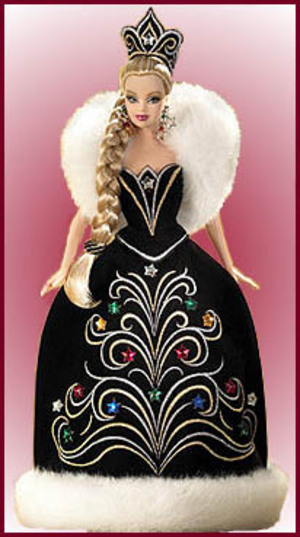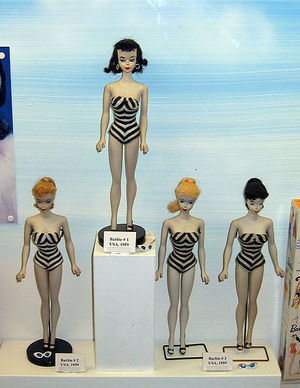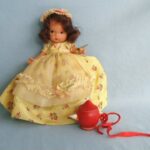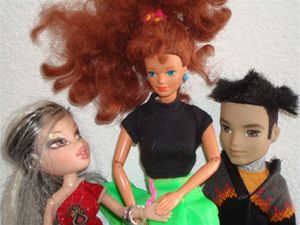I started collecting Barbie back in early 1995 around the same time we started selling antique and collectible toys at shows. The secondary market for Barbie back in 1995 was very lucrative and women and men were traveling all over the United States to find collector Barbie, particularly the vintage and special edition dolls.
That year was especially profitable for toy dealers selling the 1995 Happy Holiday Barbie. This yearly Christmas edition doll was getting harder and harder to find on the toy shelves each year and 1995 was the last “good” year for this series. The demand for this doll was so great that Mattel had to issue vouchers to customers for the doll and more were later produced and sent to the voucher holders. Due to the popularity of the 1995 Holiday Barbie, Mattel started to overproduce the next year’s Christmas Barbie, thus started the decline. By 1998, Mattel decided to retire the Happy Holidays Series.
The Happy Holiday Series started in 1988 and ran through 1998. By 1995, the demand for the 1988 Happy Holiday Barbie was so great that these dolls that cost $32.00 when they were released, were selling for upwards of $500.00 on the secondary market. If you were looking to purchase a vintage Barbie (1959 – 1969), plan on spending some big bucks there also. The very first Barbie from 1959, if you could find one, was selling for thousands of dollars. Women and men were going crazy to purchase dolls from the vintage era and dealers were making great money.
Then all of a sudden “pink box” Barbie became the latest rage to collect from the 1970s and 1980s. These are the cheaper, highly produced Barbie dolls that sold for around $10.00 – $20.00 and were found at all of your retail stores. It was ridiculous some of the prices people were willing to pay for some of these dolls. Even as a collector, I thought the whole Barbie scene was starting to get out of hand.
But all fads die down and so did the Barbie-crazed collectors. By 2000, dealers were finding it harder and harder to get rid of Barbie they had on their shelves at shows and collectors were becoming very selective in what they were buying. To me this is how collectors should have been doing it all along. As a Barbie collector with over 125 dolls in my own personal collection, I feel the art of collecting should not be based on doll value. It should be based on what you personally like and what you can get excited about seeing displayed in your home. Too many people were buying dolls just because they perceived the value to skyrocket.
Mattel was responding to the high demand they were seeing in earlier years and now the market was flooded with too many dolls which in turn brings down the value. Since that time, Barbie has remained a constant at toy shows and there are still many people out there collecting. But the mass frenzy that we experienced in earlier years is definitely gone. Dealers had to drop prices and we see many dealers selling Barbie for half of what the retail was when the dolls were initially introduced to the market. For collectors, I look at this as a great time to purchase all of the dolls that you wanted before but couldn’t afford. For example, I have been able to purchase dolls that retailed for $80 and up in the 1990s for $20 over the past couple of years. I bought a Bob Mackie doll that sold for hundreds of dollars for $10 in the box that had never removed. The 1988 Holiday Barbie I mentioned earlier in this article that sold for $500 and up? I purchased mine last year for $90. For dealers though the decline has hurt. Now dealers are afraid to sell Barbie unless they can buy complete collections from people at very reasonable prices.
As a dealer and as a collector, I feel that Barbie values and the demand will rise again. For now, I’m enjoying being able to purchase lots of great dolls for my own collection!




